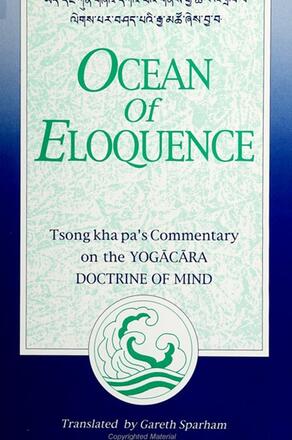
Ocean of Eloquence
Tsong kha pa's Commentary on the Yogācāra Doctrine of Mind
Alternative formats available from:
Description
This book is of particular interest because it shows the presence of the Yogācāra (Mind Only) school in Tibet. It is well known that the Mādhyamaka school flourished in Tibet, but less well known that Yogācāra doctrines were also studied and practiced. The former school stresses the inexpressible ultimate; the latter, the natural luminosity of mind. This is probably the best introduction to the distinctive eight consciousness systems of Yogācāra. It also makes understandable the different meanings of the profound alaya-vijnana (the storehouse consciousness, or basis of all) that is the pivotal eighth consciousness in their system.
For those interested in meditation, the author's introduction explains how earlier Tibetan meditation (the method of allowing mind to look into its own pure nature) uses the eight-consciousness system.
The book is remarkable in that it addresses the problem of how a person trapped within the confines of a limited and deluded personality can transcend that state and attain liberation. By his inquiry into the process of transformation, Tsong kha pa makes profound comments which will interest those who ask whether enlightenment is a gradual process or a sudden breakthrough.
Tsong kha pa (1357-1419) wrote extensively on nearly every aspect of Buddhist religious philosophy and practice. The text edited and translated here is the Yiddang kun gzhi dka'ba'iignas rgyacher'grel pa legs par bshad pa'i rgya mtsho, often referred to as the Commentary on the Difficult Points.
Gareth Sparham, is unusual in that he is a respected academic and also has been a Buddhist monk for twenty years. He presently teaches at Langara College in Vancouver, B.C. He is an accomplished Sanskritist whose work on the Indian Buddhist writer Haribhadra has been published by Motilal Banarsidass. He spends part of his time in Dharmsala, India.